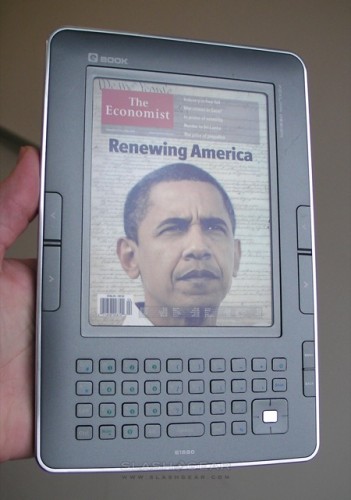
Qualcomm is funding the development of a new type of display technology called Mirasol and it is being touted as the future of eBook readers. That means it will replace the e-Ink technology that our beloved Kindle uses. So how does it work and why is it (reportedly) so much better?
Mirasol has been developed by mimicking a feature that makes the butterfly’s wings shimmer. It uses no back lighting, just like e-Ink and uses incidental light to reflect it back through a special layer. This layer is made up of multiple microscopic membranes that can be change through electric current. Once they change, they remain static in that state until another electric charge causes them to change again. This means they do not use electricity during a period of no change.
Their main advantage is that these membranes can produce the three main colors used in modern color displays – Red, Green And Blue (RGB) – and hence can produce a vibrant colored image. They also produce very impressive blacks (at least in theory) because in their closed state they reflect no light at all and have no other source of light.
Due to their design, they are able to run higher frame rates, thus making smooth videos a possibility on the display. Currently, pushing the frame rate up on the e-Ink would cause it to consume more battery.
That is because e-Ink uses tiny microcapsules that have three states – Black, white amd mixed. Changing them through negative and positive charges creates the same effect as LCD pixels. But since they contain physical particles, they do not need any backlighting. But making them support RGB would require highly specialized particles and higher frame rates would require much more current.
How this will affect eBook readers is still debatable but if it does become viable, then Amazon might consider switching. We just have to wait a bit more to see how it pans out. Qualcomm intends to have it in the market by the end of 2010.
Obama looks the same on grey scale screen :)
I’ve read somewhere that while the Mirasol screen can reach high frame rates, doing so would also require more energy, which makes sense, so for book readers it will have slow refresh for longer battery times. Don’t know if this is correct.
I hope they make these screens for the Kindle. Within 10 years, paper books, newspapers, and magazines will no longer exist.
I wouldn’t say that they will not exist at all. Paper books will most likely become collector’s items kind of like hot rod cars from rock-n-roll era.
yeah…they will survive as collector’s items….so I exaggerated a bit.
I think we’re going to find over the next few years that the problem isn’t the display technology but the battery technology. It has been the problem for awhile, affecting laptops, phones, etc. Hopefully someone will come out with a great breakthrough and that will allow us to have more impressive devices. It’s always about the power.
Of course, if it keeps going the way it is, we’ll probably have power radiating out of houses and cars to recharge our devices and that, well that will fix the problem.